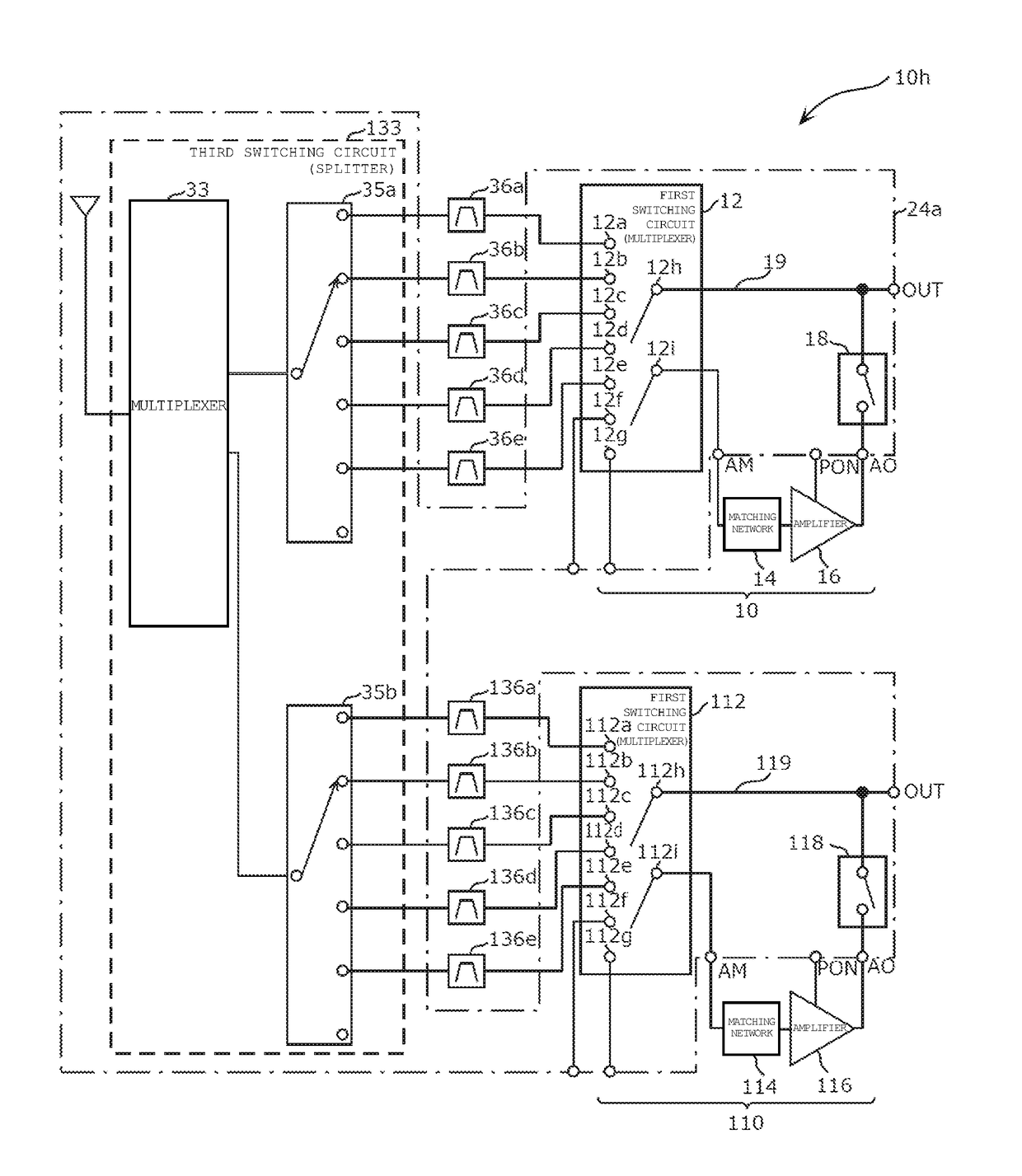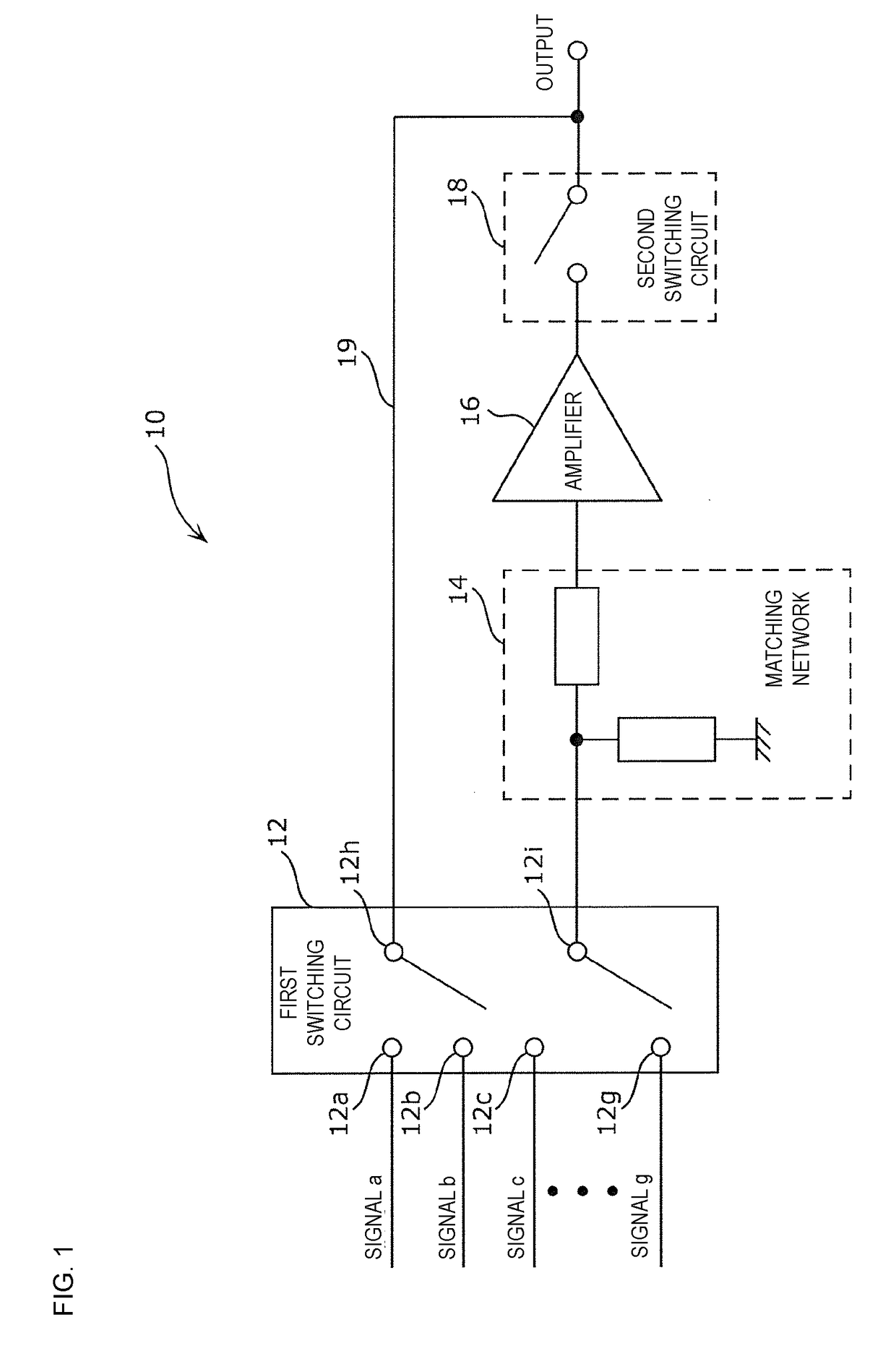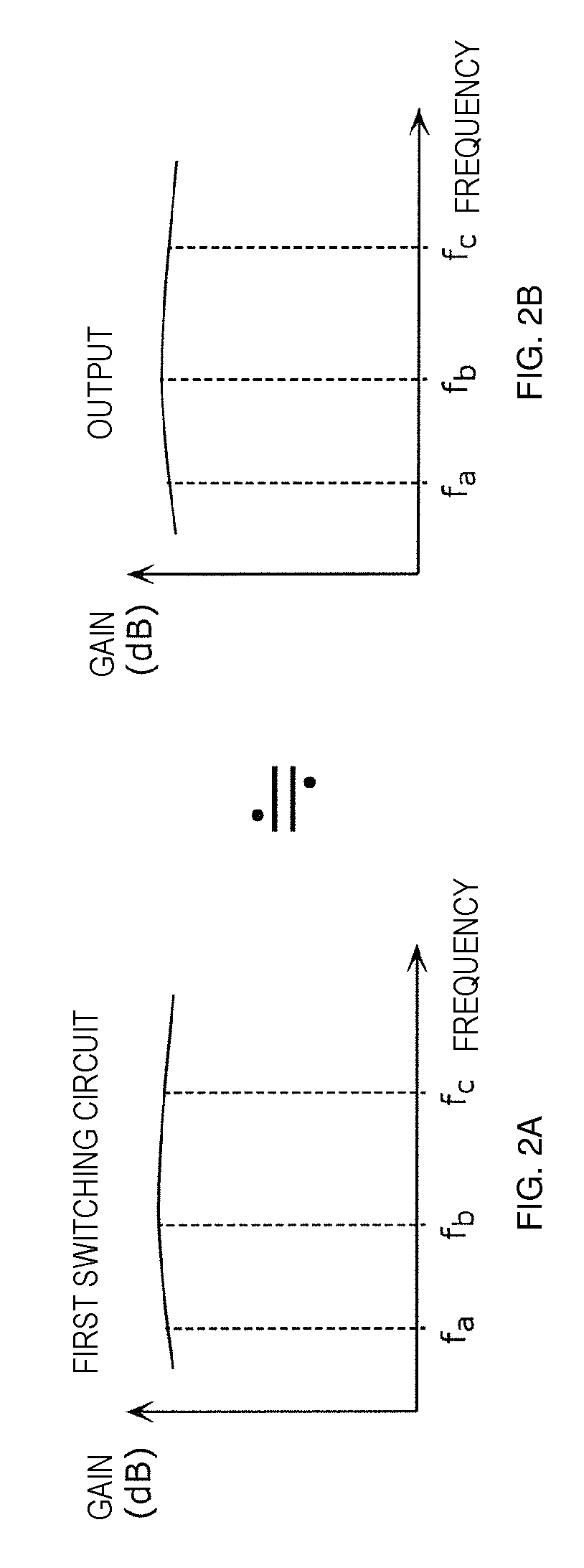Amplification circuit
a technology of amplification circuit and amplification circuit, which is applied in the direction of low-noise amplifiers, gated amplifiers, amplifiers using switched capacitors, etc., can solve the problems of increasing the difference in pass loss, difficult to use the circuit as a reception circuit that handles input signals of a plurality of frequency bands, and affecting the frequency of bypassing, so as to achieve significant reduction or prevention of frequency dependence when bypassing is performed
- Summary
- Abstract
- Description
- Claims
- Application Information
AI Technical Summary
Benefits of technology
Problems solved by technology
Method used
Image
Examples
embodiment 1
Preferred Embodiment 1
[0094]FIG. 1 is a circuit diagram of an amplification circuit of preferred embodiment 1 of the present invention. The amplification circuit 10 preferably is a bypass-path-equipped amplification circuit and includes a first switching circuit 12, a matching network 14, an amplifier 16, a second switching circuit 18 and a bypass path 19.
[0095]The first switching circuit 12 is a circuit that includes one or more input terminals (here, input terminals 12a to 12g that correspond to signals a to g of a plurality of frequency bands), and a first output terminal 12i and a second output terminal 12h and that puts the second output terminal 12h into an open state of being open with respect to the input terminals 12a to 12g while selectively connecting the first output terminal 12i to any one of the input terminals 12a to 12g or selectively connects the second output terminal 12h to any one of the input terminals 12a to 12g while putting the first output terminal 12i into ...
embodiment 2
Preferred Embodiment 2
[0122]Next an amplification circuit of preferred embodiment 2 of the present invention will be described.
[0123]FIG. 7 is a circuit diagram of an amplification circuit of preferred embodiment 2 of the present invention. The amplification circuit 30 is a high-frequency module that selects and amplifies one signal from among signals of a plurality of frequency bands received by an antenna and includes a third switching circuit 32, a control circuit 34 and filters 36a to 36e in addition to the constituent components of the amplification circuit 10 of preferred embodiment 1.
[0124]The third switching circuit 32 is a circuit that includes an input terminal 32a and a plurality of output terminals 32b to 32h and that selectively connects the input terminal 32a to any of the plurality of output terminals 32b to 32h in accordance with a control signal input from the control circuit 34, and is, for example, a splitter includes a single pole n throw (SPnT; n being the numbe...
embodiment 3
Preferred Embodiment 3
[0145]Next an amplification circuit of preferred embodiment 3 of the present invention will be described.
[0146]FIG. 10 is a circuit diagram of an amplification circuit 10b of preferred embodiment 3 of the present invention. The amplification circuit 10b is a high-frequency module that selects and amplifies one signal from among signals of a plurality of frequency bands received by an antenna. The amplification circuit 10b includes a configuration in which, in the amplification circuit 10 of preferred embodiment 1, the amplifier 16 is replaced with an amplifier 16a which is a variable-gain amplifier. Elements which are the same as those in preferred embodiment 1 are denoted by the same reference symbols, and primarily different points will be described.
[0147]The amplifier 16a is connected to the output side of the matching network 14 and is preferably, for example, a low-noise amplifier of variable gain manufactured using an Si—Ge process. The gain of the amplif...
PUM
 Login to View More
Login to View More Abstract
Description
Claims
Application Information
 Login to View More
Login to View More - R&D
- Intellectual Property
- Life Sciences
- Materials
- Tech Scout
- Unparalleled Data Quality
- Higher Quality Content
- 60% Fewer Hallucinations
Browse by: Latest US Patents, China's latest patents, Technical Efficacy Thesaurus, Application Domain, Technology Topic, Popular Technical Reports.
© 2025 PatSnap. All rights reserved.Legal|Privacy policy|Modern Slavery Act Transparency Statement|Sitemap|About US| Contact US: help@patsnap.com



